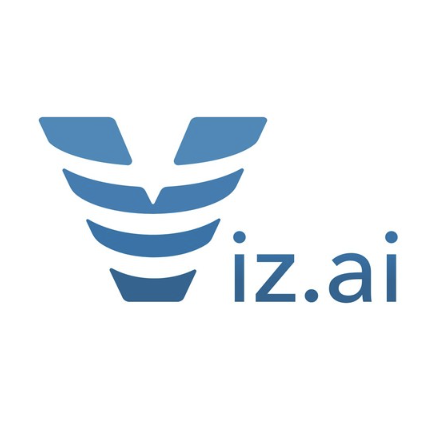
In the fast-paced startup ecosystem, understanding what your startup is worth is more than just a number – it’s a strategic necessity. Your valuation serves as the foundation for crucial decisions, from raising capital and negotiating equity to attracting top talent and charting a path for growth. But valuing an early-stage company is uniquely challenging because many startups don’t have extensive financial histories and often operate in uncertain markets. This guide to startup valuation demystifies the process, exploring the most widely used methods, the factors that influence value, and practical tips to help founders and investors navigate this complex process. And if you need a 409A valuation for your startup, Kruze Consulting can help.
Valuations for startup companies are important for several strategic, financial, and legal reasons:
- Fundraising and investment. Valuation determines how much equity to offer investors in exchange for capital, directly affecting ownership structure and negotiations during funding rounds.
- Stock compensation. Startups often use stock options to attract and retain talent. Accurate valuations are necessary for setting fair strike prices and complying with tax regulations.
- Mergers and acquisitions (M&A). When considering selling the company, merging, or acquiring another business, valuations help establish a fair transaction price.
- Divestitures. If a startup plans to sell off parts of its business, valuations help determine the worth of those assets.
- Financial and tax reporting. Regulatory bodies may require periodic valuations for financial statements and tax purposes.
- Bank reporting and securing loans. Lenders may require an independent valuation to assess risk before providing loans.
- Legal disputes. Valuations are used in resolving ownership disputes, partnership dissolutions, or litigation.
- Strategic planning and decisions. Founders and management use valuations to set goals, allocate resources, and evaluate company performance.
Common Startup Valuation Methodologies
Startup valuation can be difficult due to limited financial history and uncertain markets. As a result, VCs, investors, and entrepreneurs have developed several valuation methodologies – both qualitative and quantitative – that are used depending on the startup’s stage and available data. The following overview includes the most widely used methods, and we’ll go into more detail on each below.
| Methodology | Description | Best Used For | Stage Most Applicable |
|---|---|---|---|
| Market/ Comparable Approach |
Values the startup by comparing it to similar companies (public or private) using multiples (e.g., revenue, users) | Startups with some revenue or user data | Seed to Series C |
| Discounted Cash Flow (DCF) | Projects future cash flows and discounts them to present value using a chosen rate | Later-stage startups with predictable cash flow | Series B to C |
| Berkus Method | Assigns value to qualitative factors such as ideas, prototypes, teams, relationships, and sales | Early-stage, pre-revenue startups | Pre-seed to Seed |
| Scorecard Method | Benchmarks the startup against similar companies using weighted qualitative criteria | Pre-revenue startups seeking seed funding | Seed to Series A |
| Cost-to-Duplicate Approach | Values the company based on the cost to recreate its assets and technology | Startups with significant R&D or tech assets | Pre-seed to Seed |
| Risk Factor Summation | Adjusts a base valuation up or down based on 12 risk categories | Early-stage startups, complements other methods | Seed to Series A |
| Venture Capital (VC) Method | Calculates post-money valuation based on expected exit value and required investor ROI | Pre-revenue startups, especially for VC deals | Series A to B |
| Book Value Method | Values the startup based on net assets (assets minus liabilities) | Asset-heavy startups, less common for tech | Asset-heavy* |
| First Chicago Method | Combines scenario analysis (best, base, worst case) with probability-weighted outcomes | Startups with some operating data, high uncertainty | Series B to C |
*The Book Value method is rarely used for high-growth startups and is more applicable to asset-heavy businesses at any stage, and it’s uncommon in tech-driven funding rounds.
Which Methods Do Early-Stage Startups Use?
For early-stage startups, the most commonly used valuation methods are the Berkus Method, the Scorecard Method, and comparable company analysis (also known as the market multiple or comps approach). These methods rely on qualitative factors, market benchmarks, and relative comparisons rather than detailed financial projections, which are often unavailable at this stage. Investors may also use the risk factor summation method and, less frequently, the cost-to-duplicate approach as additional tools for triangulating value in the absence of significant revenue or earnings. Some additional context on methods used at various stages:
- Market/Comparable: Used across stages once comparable data exists (e.g., Series A startups with user/revenue metrics can be compared to peers).
- DCF: Relies on predictable cash flows, making it viable for Series B/C startups with established revenue.
- Berkus & Scorecard: Tailored for pre-seed/seed stages where qualitative factors dominate.
- VC Method: Aligns with Series A/B rounds where exit potential drives investor negotiations.
- First Chicago: Fits later stages (Series B/C) with operational data but lingering uncertainty.
Brief Descriptions of Key Methods
- Market/Comparable Approach. The market or comparable approach to startup valuation estimates a company’s value by comparing it to similar businesses in the same industry, stage, and market position that have been recently valued, acquired, or funded. This method relies on identifying a set of relevant peer companies and analyzing their valuation metrics – such as revenue multiples or price-to-earnings ratios – to establish a realistic range for the startup’s valuation. It is particularly useful for startups because it anchors the valuation in actual market data and provides a benchmark against which to assess the company’s worth. However, its accuracy depends on the quality and relevance of the chosen comparables and may require adjustments for differences in growth, risk, or business model.
- Discounted Cash Flow (DCF). The DCF approach to startup valuation estimates a company’s worth by projecting its future cash flows and discounting them back to their present value using an appropriate discount rate, typically reflecting the risk and time value of money. This method is particularly useful for startups because it focuses on expected future performance rather than historical financials, so it can be used when a company has limited or no revenue history. However, DCF valuation relies heavily on the accuracy of financial projections and the chosen discount rate, both of which can be difficult to determine for early-stage startups due to uncertainty and volatility.
- Berkus Method. The Berkus approach to startup valuation is a method specifically designed for early-stage, pre-revenue startups. It focuses on qualitative factors rather than financial projections. This method assigns a monetary value – typically up to $500,000 each – to five key elements: a sound idea, a quality management team, a working prototype, strategic relationships, and product rollout or early sales, with a maximum total valuation of $2.5 million. By evaluating progress in these critical areas, the Berkus Method offers a straightforward way to estimate a startup’s value when little or no financial data is available. This approach also helps founders and investors identify strengths and weaknesses, which is often a starting point for negotiations and further valuation discussions.
- Scorecard Method. The scorecard approach to startup valuation, also known as the Bill Payne Method, is commonly used by angel investors to assess early-stage, pre-revenue companies by comparing them to similar startups in the same region and industry. It begins with determining the average pre-money valuation of comparable startups, then adjusts this benchmark by evaluating key qualitative factors such as the strength of the management team, size of the opportunity, product or technology, competitive environment, and marketing or sales channels – each assigned a specific weight. The target startup is scored on these factors and the weighted adjustments are applied to the average valuation to estimate the startup’s value.
- Cost-to-Duplicate. The cost-to-duplicate (sometimes called cost-to-recreate) approach to startup valuation estimates a company’s worth by calculating the total cost required to recreate the business from scratch, including all tangible assets and development expenses. This objective baseline valuation is useful for early-stage startups with significant investments in technology or intellectual property. However, it doesn’t account for intangible assets such as brand value or customer relationships, nor does it consider future growth potential, which can limit its applicability. Despite those limitations, the cost-to-duplicate approach can provide a practical reference point for negotiations and helps founders and investors understand the minimum value of a startup based on real, incurred costs.
-
Risk Factor Summation. The risk factor summation approach to startup valuation begins with the average pre-money valuation of comparable startups in the same industry and region, then adjusts this baseline based on an assessment of 12 key risk factors:
- Management risk
- Stage of the business
- Legislation/political risk
- Manufacturing (or supply chain) risk
- Sales and marketing risk
- Funding/capital raising risk
- Competition risk
- Technology risk
- Litigation risk
- International risk
- Reputation risk
- Potential lucrative exit (exit value risk)
Each risk factor is scored on a scale from -2 (very negative) to +2 (very positive), with the valuation increased or decreased by a set amount (commonly $250,000) for each point above or below neutral. The sum of these adjustments is applied to the initial average valuation, giving a risk-adjusted pre-money valuation based on the startup’s unique risk profile.
- Venture Capital Method. This widely used approach for valuing early-stage startups estimates the startup’s potential exit value, such as through an IPO or acquisition – by applying industry-specific multiples to projected future earnings or revenues at the anticipated exit year, typically five to seven years ahead. The expected exit value is then discounted back to the present using the investor’s required rate of return, allowing the calculation of the company’s current (pre-money) valuation and the investor’s desired ownership stake. This approach helps investors determine how much equity to request in exchange for their investment.
- Book Value. The book value method is very straightforward compared to other valuation approaches: The startup’s value is calculated by subtracting its total liabilities from its total assets, as recorded on the balance sheet. This estimate of a startup’s net worth essentially reflects what shareholders would receive if the company were liquidated at that moment. It’s a very conservative benchmark that doesn’t account for future growth potential or intangible assets, making it less suitable for startups with few tangible assets or significant intellectual property.
- First Chicago Method. This valuation approach involves building three distinct financial scenarios – upside (best case), base (most likely case), and downside (worst case) – and assigning a probability to each outcome based on detailed forecasts and market analysis. The value of the company in each scenario is calculated using methods like Discounted Cash Flow (DCF) or the Venture Capital Method, and then a probability-weighted average of these valuations is computed to arrive at a final value. This approach provides a more nuanced view of potential outcomes than single-scenario valuation models.
Summary Table of Startup Valuation Methods
| Method | Key Inputs/Factors | Main Advantage | Main Limitation |
|---|---|---|---|
| Market/ Comparable |
Comparable company data, multiples | Market-driven, intuitive | Requires good comps |
| DCF | Projected cash flows, discount rate | Intrinsic value focus | Hard to forecast for early-stage |
| Berkus | Qualitative milestones | Simple, qualitative | Subjective, capped value |
| Scorecard | Qualitative and sector averages | Structured, comparative | Needs sector data |
| Cost-to- Duplicate |
Asset replication costs | Objective, tangible | Ignores intangibles |
| Risk Factor Summation | Risk assessment across categories | Comprehensive risk view | Subjective risk grading |
| VC Method | Exit multiples, ROI expectations | Investor-aligned | Assumes exit, ignores interim value |
| Book Value | Balance sheet data | Simple, factual | Misses growth/intangibles |
| First Chicago | Scenario probabilities, outcomes | Captures uncertainty | Complex, data-intensive |
It’s Best to Combine Methods
Each valuation method relies on different assumptions and data, and those can produce widely varying results. Founders and investors often use a combination of methods to develop a reasonable value, balancing quantitative data with qualitative judgment.
Applying multiple methods – like DCF, market/comparable, and scorecard approaches – allows VCs and founders to cross-check results and get a more balanced, credible valuation. As noted above, some methods, like cost-to-duplicate, can undervalue a startup by ignoring growth potential, while others, like market/comparable, depend on finding truly comparable companies, which can be difficult in emerging sectors. Using more than one method helps mitigate the limitations of any single approach.








